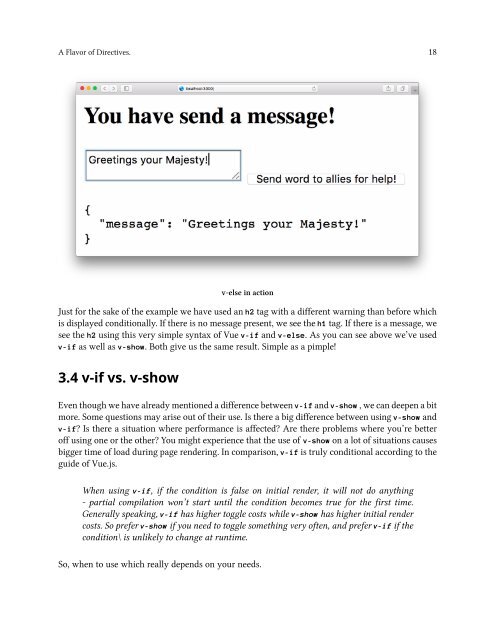vuejs
Create successful ePaper yourself
Turn your PDF publications into a flip-book with our unique Google optimized e-Paper software.
A Flavor of Directives. 18<br />
v-else in action<br />
Just for the sake of the example we have used an h2 tag with a different warning than before which<br />
is displayed conditionally. If there is no message present, we see the h1 tag. If there is a message, we<br />
see the h2 using this very simple syntax of Vue v-if and v-else. As you can see above we’ve used<br />
v-if as well as v-show. Both give us the same result. Simple as a pimple!<br />
3.4 v-if vs. v-show<br />
Even though we have already mentioned a difference between v-if and v-show , we can deepen a bit<br />
more. Some questions may arise out of their use. Is there a big difference between using v-show and<br />
v-if? Is there a situation where performance is affected? Are there problems where you’re better<br />
off using one or the other? You might experience that the use of v-show on a lot of situations causes<br />
bigger time of load during page rendering. In comparison, v-if is truly conditional according to the<br />
guide of Vue.js.<br />
When using v-if, if the condition is false on initial render, it will not do anything<br />
- partial compilation won’t start until the condition becomes true for the first time.<br />
Generally speaking, v-if has higher toggle costs while v-show has higher initial render<br />
costs. So prefer v-show if you need to toggle something very often, and prefer v-if if the<br />
condition\ is unlikely to change at runtime.<br />
So, when to use which really depends on your needs.


